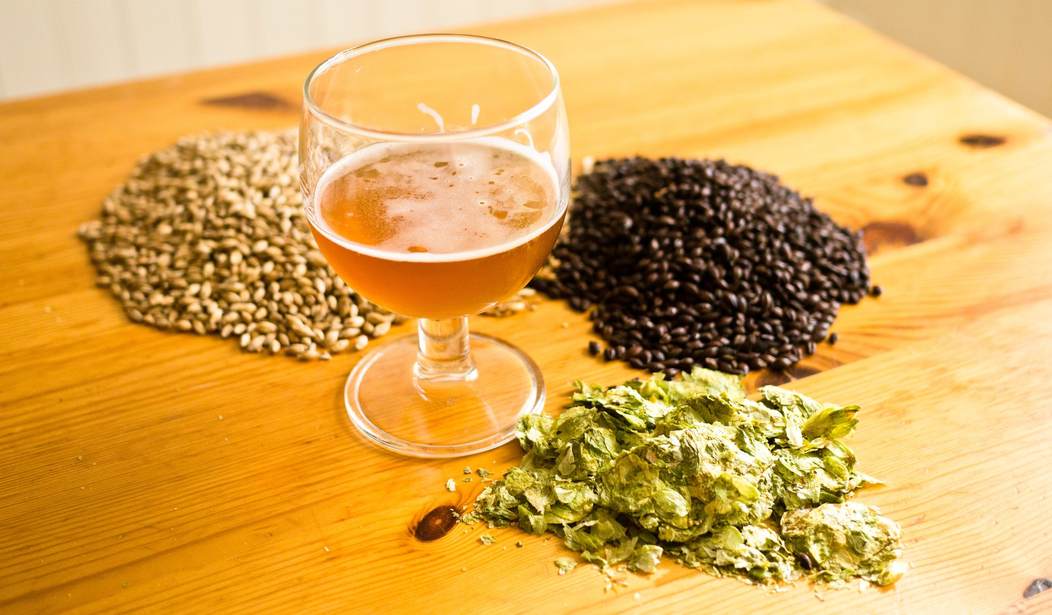Brewing beer is a great hobby. You get to pick what goes into the brew and you get to watch as the mixture of hops, malt, yeast, and water go from just a boiling pot to fermentation to carbonation over the course of several weeks. There are plenty of arguments over the best sources for ingredients. Some are purists who say you should go as far as milling your own barley. Others will say, for the sake of convenience, that prepackaged hop pellets are fine. My suggestion is: go wild and experiment.
One of the greatest benefits of homebrewing is that YOU get to pick the ingredients. Of course, there are literally millions of recipes you can find for various types of beer from books and websites. But homebrewing is about what you want to make.
First, I recommend experimenting with different mixtures and pairings of hops and malt. You can do some reading on how different grains and hops create different flavors. For example, you may notice that most hops have an “alpha” rating. This describes how bitter the hops are. The flavor of the hops will also change depending on when you add them. If you have them in a boil for a long time you will get less flavor but you will get the bittering.
Playing with the basic ingredients is fun—even different types of water can change the outcome. But what I really like doing when I home brew is experimenting with the adjuncts. In beer-brewing terms, an adjunct is an ingredient which isn’t necessary to create beer, but can add flavor or other properties to it. Think of it like icing on a cake. Some people do not like adjuncts in their beer and that’s OK. Everyone can have their favorite. However, when you are brewing it yourself, you may find all kinds of wonderful beers through experimentation.
So what can be used as an adjunct? Common adjuncts include spices, fruits, different grains, coffee, or really anything else you think could add flavor. I have had a lot of luck with different types of fruit. I once even made a rather good wild raspberry beer with raspberries I picked myself on a neighboring farm (see video below of how well it fermented!). My kiwi beer was also rather successful. Now, I know what some of you are thinking. Why would I want to make my beer fruity? For starters, it is a great way to get your beer-averse or wine-inclined friends to try your crazy creations. Plus, having just a hint of fruit can make a good summer beer.
Other adjuncts that I have found to be rather successful include different types of sugar. This one you do have to be careful with. Some sugars will produce a bad taste after fermentation or carbonation. But the real danger is if you give the yeast too much sugar during the carbonation process. The yeast will eat up all that sugar and create so much pressure you will have explosions which will create loud bangs and a big mess. This is really easy to do if you use honey, as it is hard to gauge how much sugar is in that honey. The one sugar adjunct that I personally really like is agave nectar. I have found it can produce a very smooth finish to the beer. It’s great for summer ales.
So what about those winter months? Spices are a common ingredient in Christmas ales. Cinnamon, clove, ginger, nutmeg, licorice, and grains of paradise are just a few that are commonly used in Christmas beers. Other ingredients can include oatmeal and coffee. This winter I plan on attempting an Irish cream and stout hybrid.
Will some of your beers turn out badly? Yes. That is what happens when you experiment. You will find some things that you like, and some things better left as slug bait. If you are concerned about making a big batch of beer (typically I brew in five-gallon batches), going through all that work, and then wasting it at the end, you do have a couple of easier approaches which I recommend. First, you can brew in small batches. I have a couple one-gallon glass jugs that I use for experiments. You also could brew a full five-gallon batch of something safe, but siphon off a gallon on the side to experiment with. Just be careful to do all your measurements right when dealing with different volumes of beer.
I hope I have given you some ideas and motivation for creating something really experimental. Try ingredients I didn’t even list. Sometimes something crazy will work out great. Unfortunately I do not have any recommendations on when to add the ingredients and how much. That is all part of the fun of experimenting. When you are home brewing, you are the brewmaster, so why rely strictly on conventional recipes? If you have done anything crazy-experimental with brewing beer, please share in the comments below!










Join the conversation as a VIP Member